ALEXANDER CALDER (1898-1976)
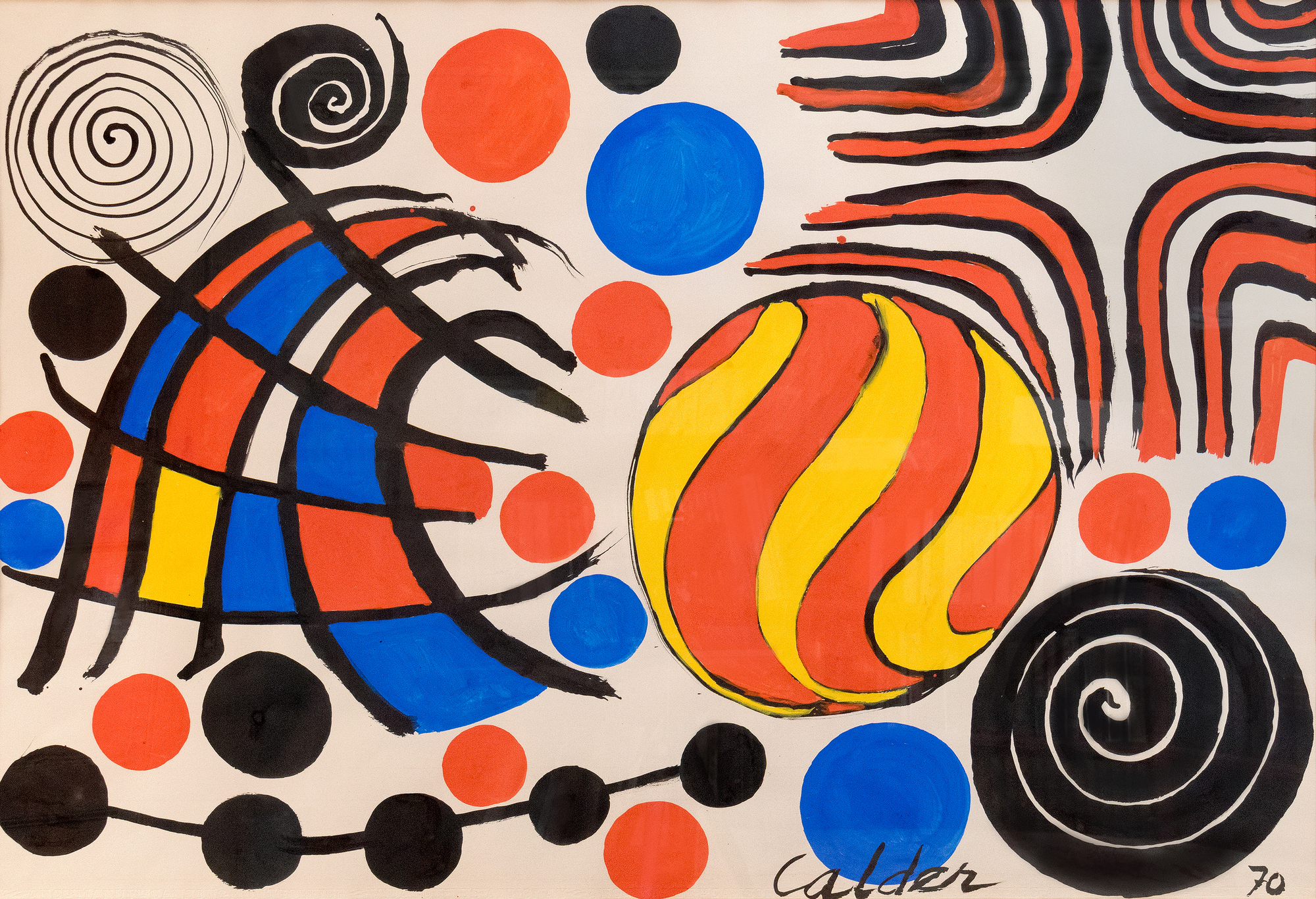
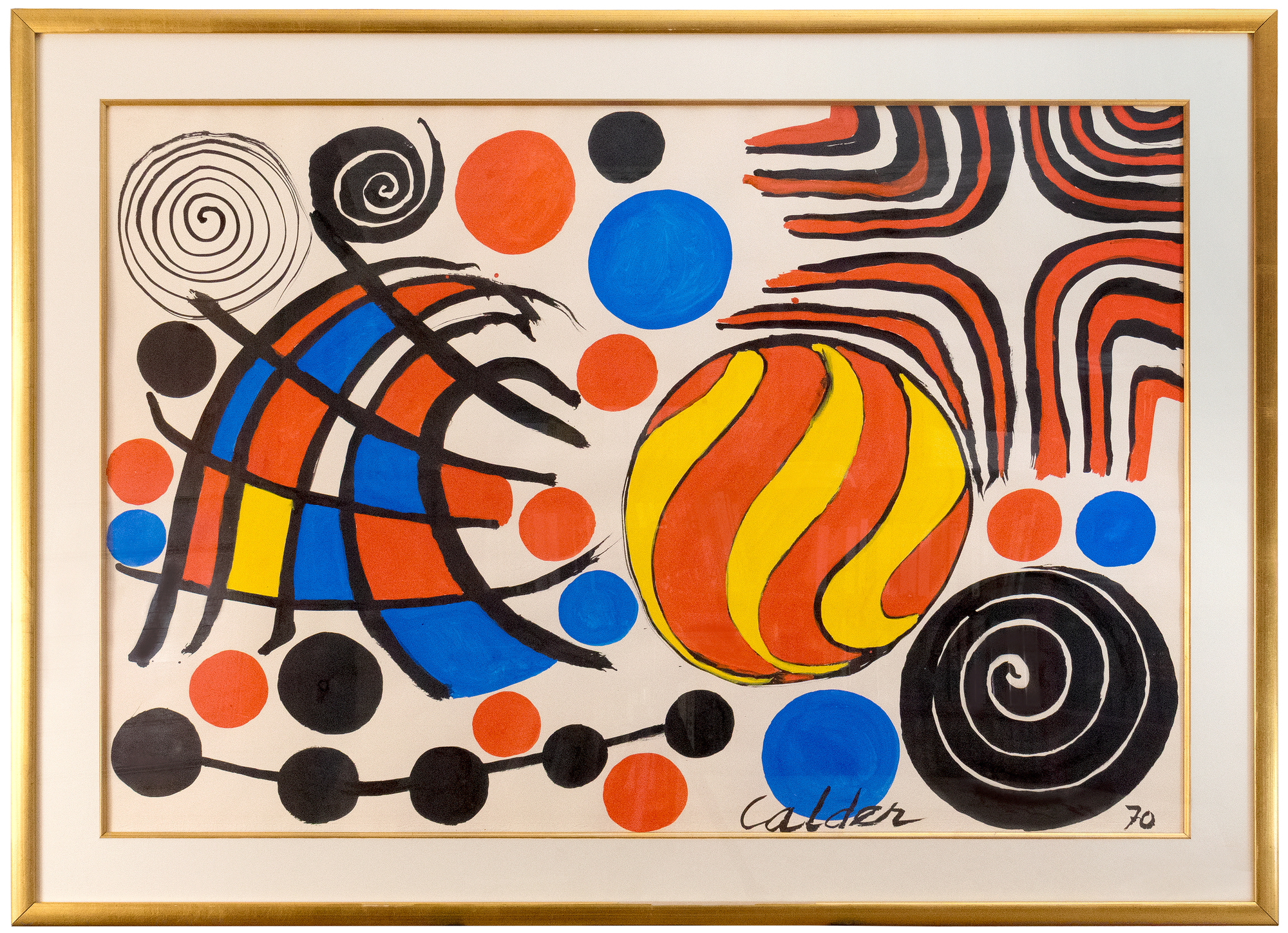
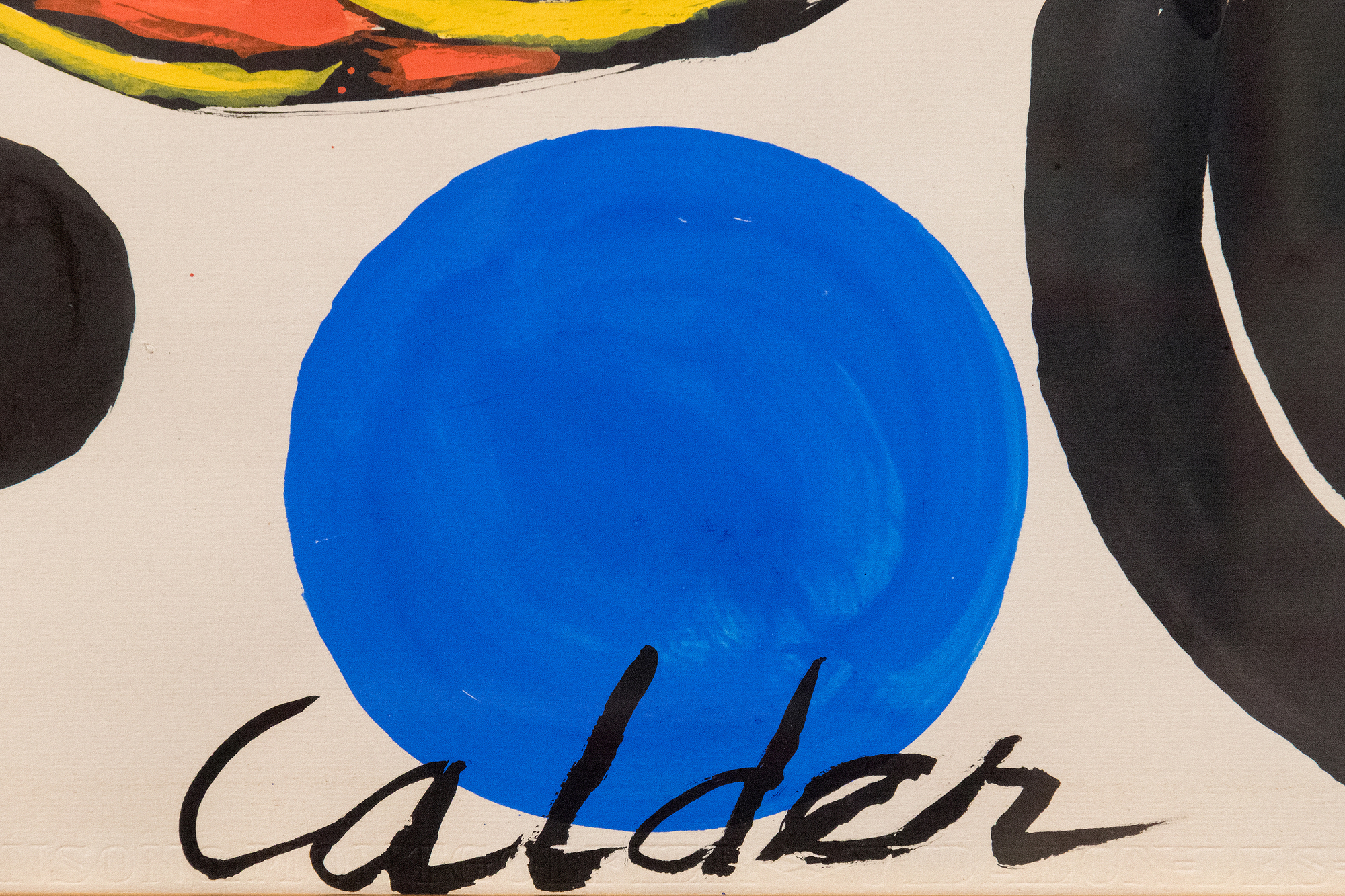
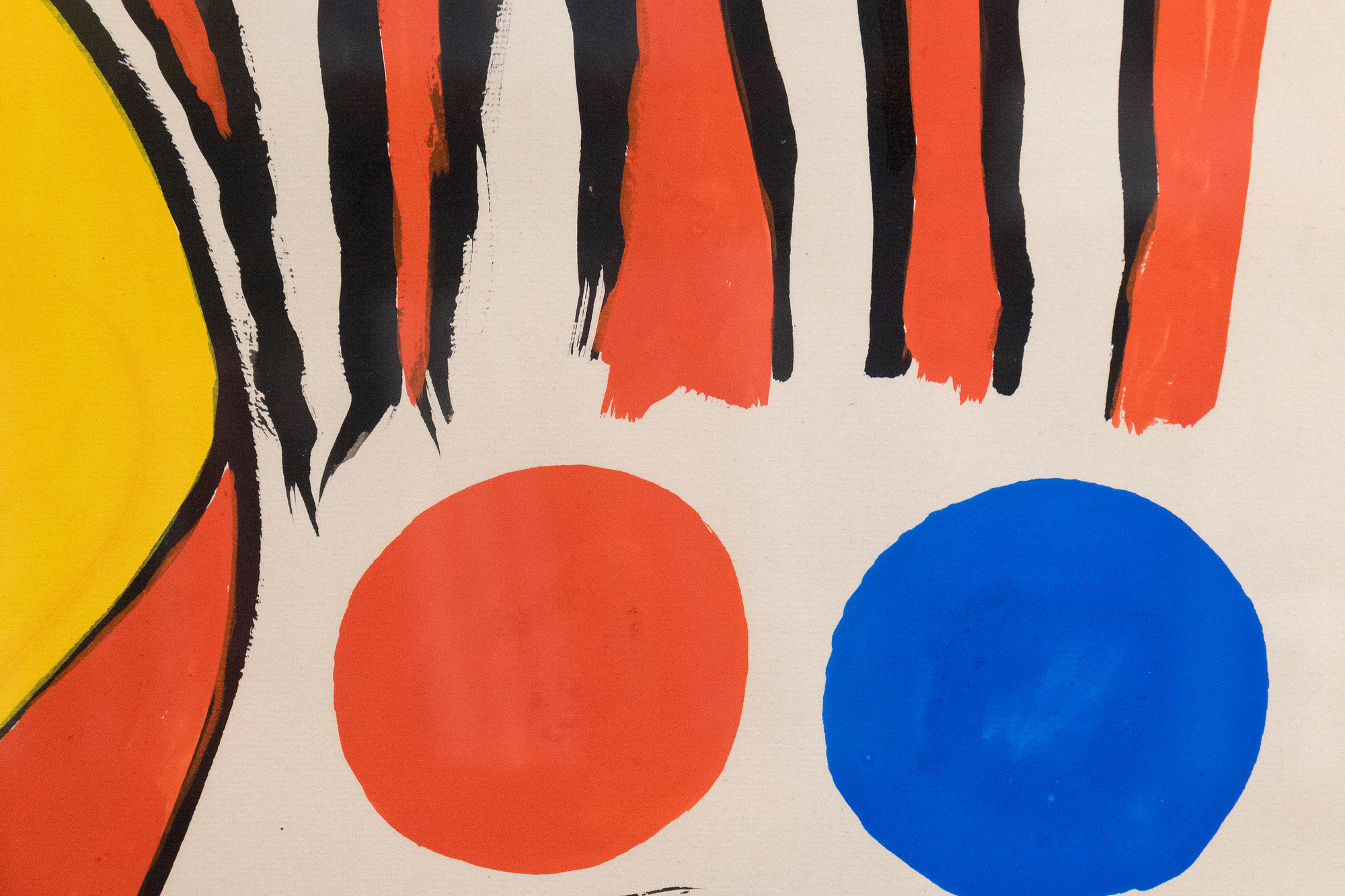
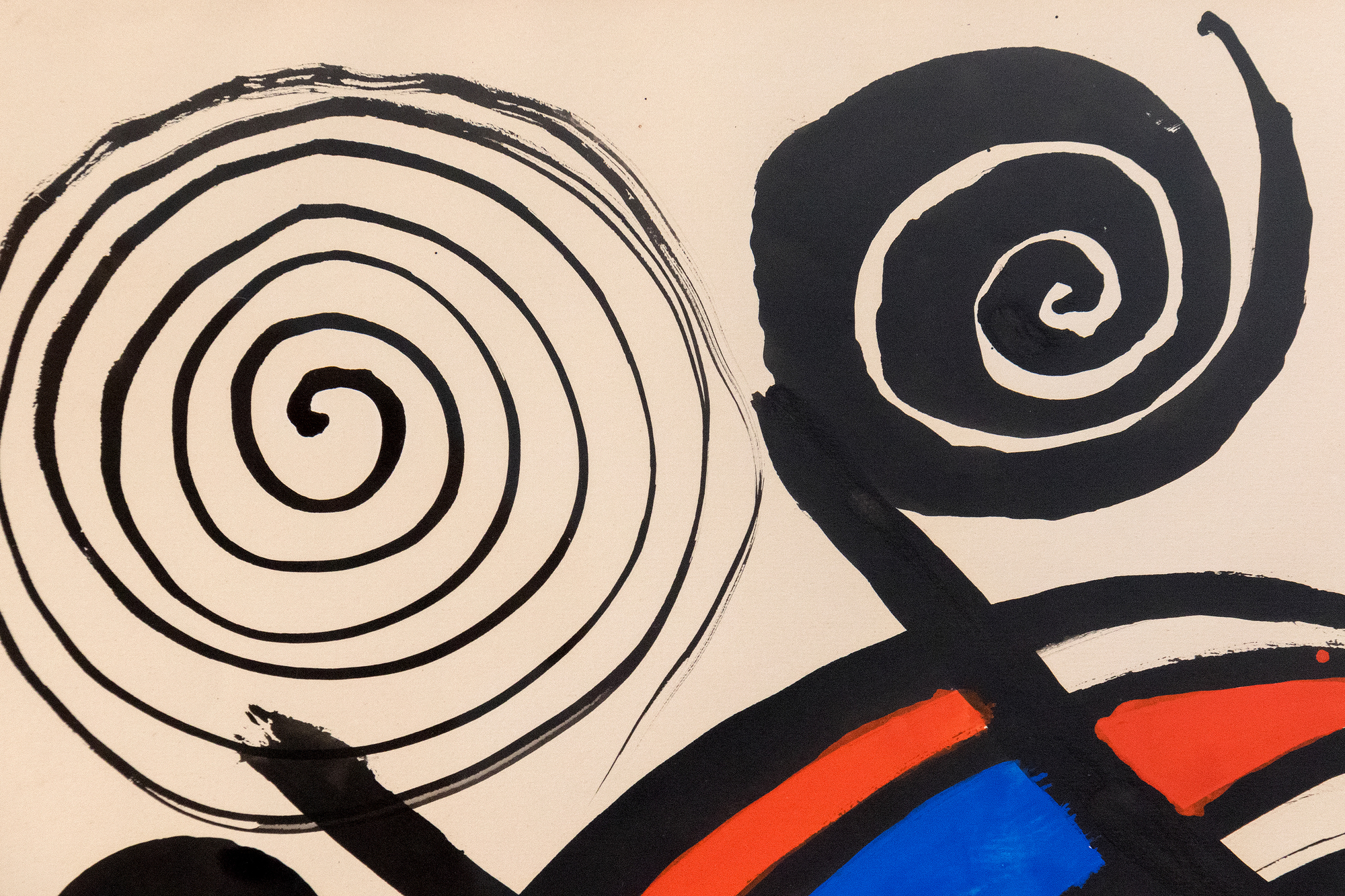
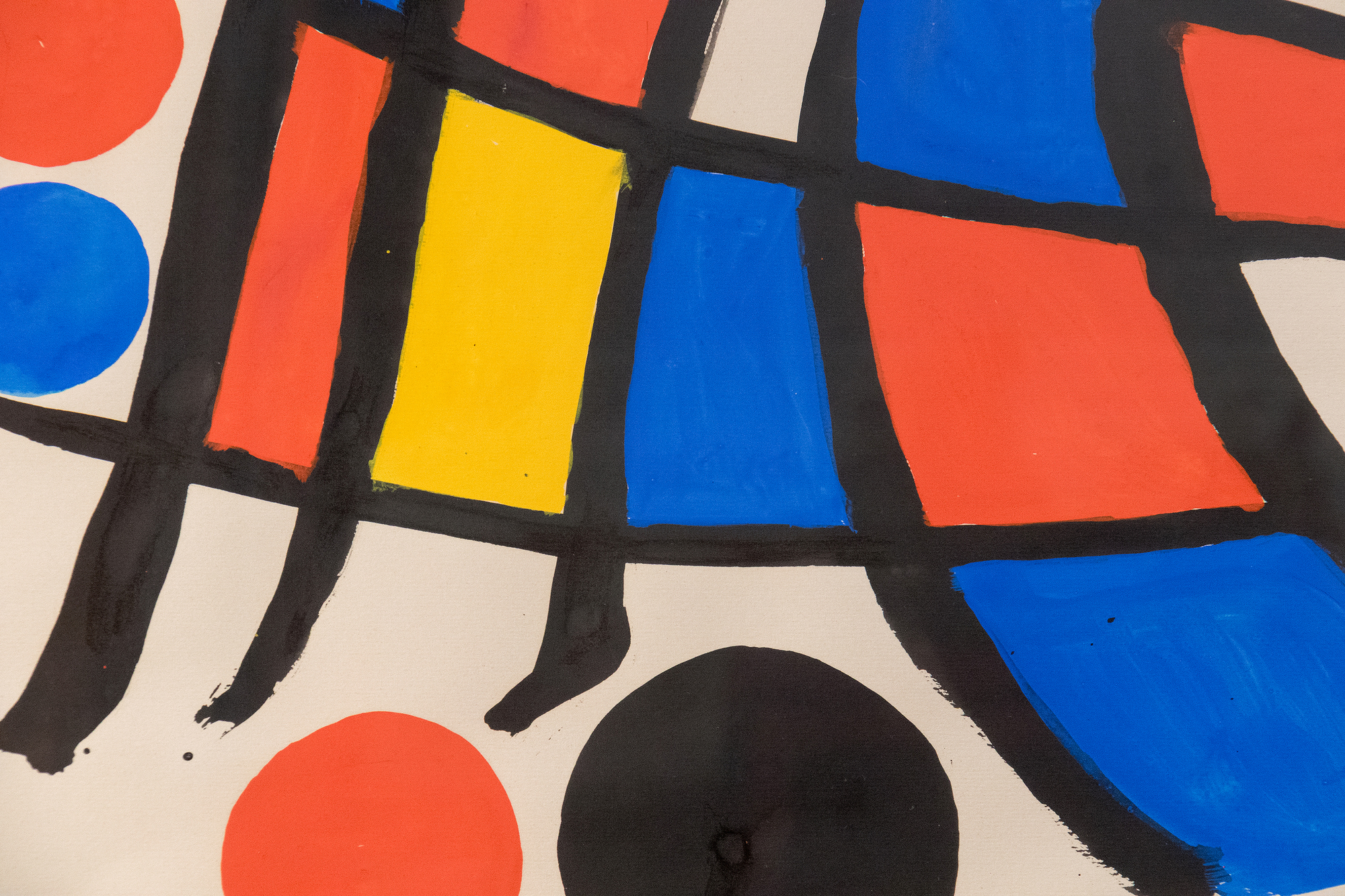
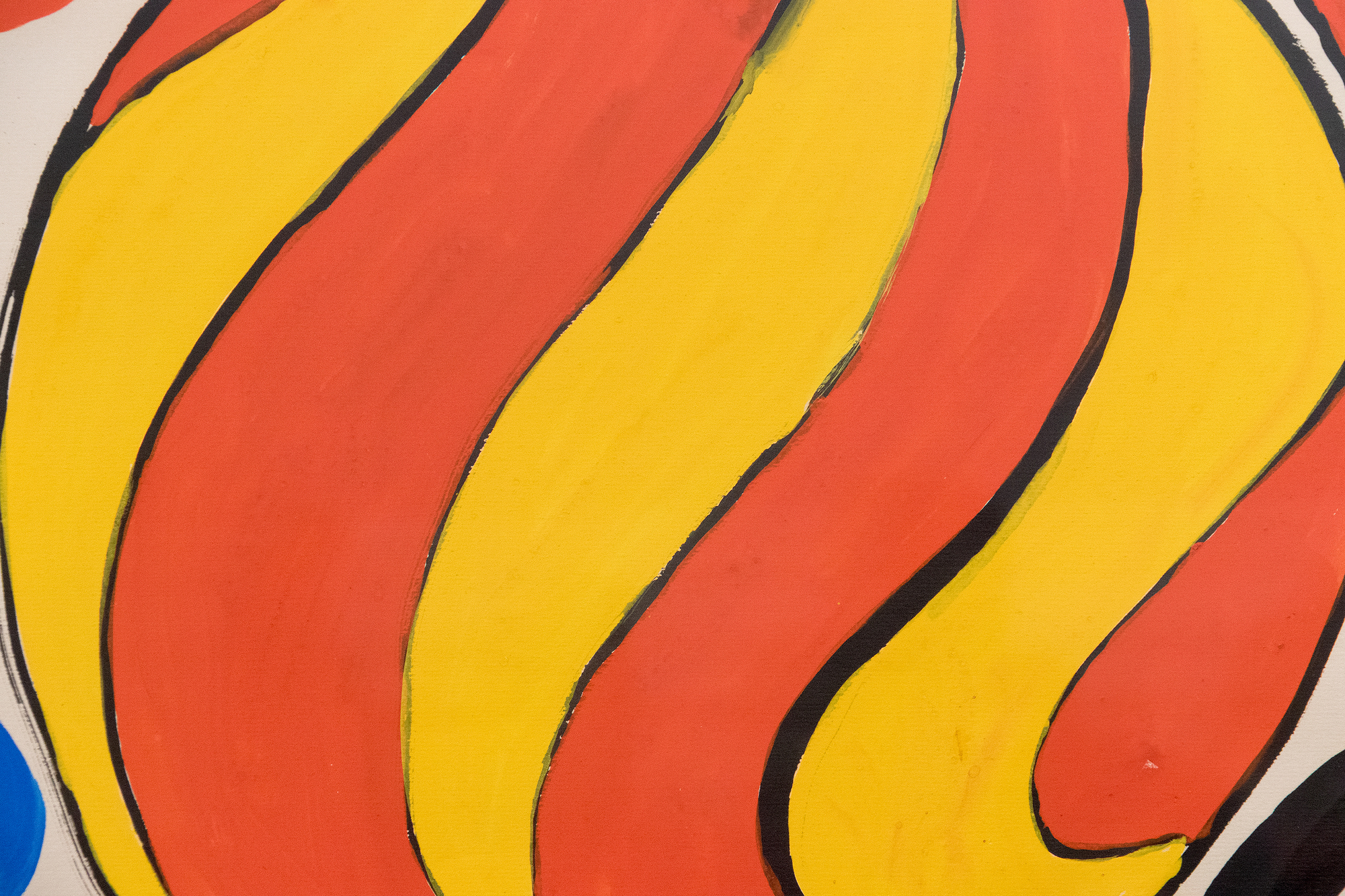
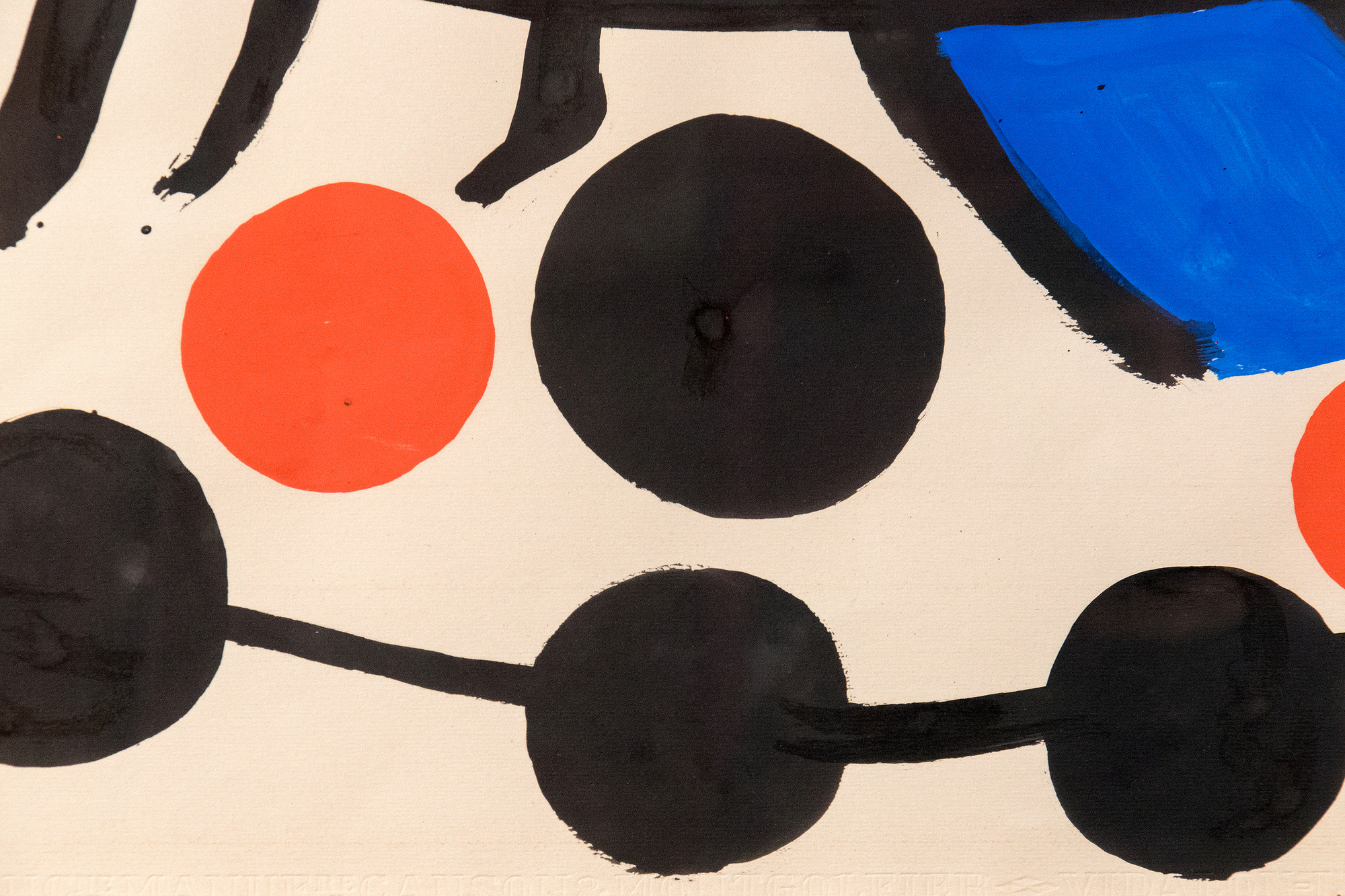
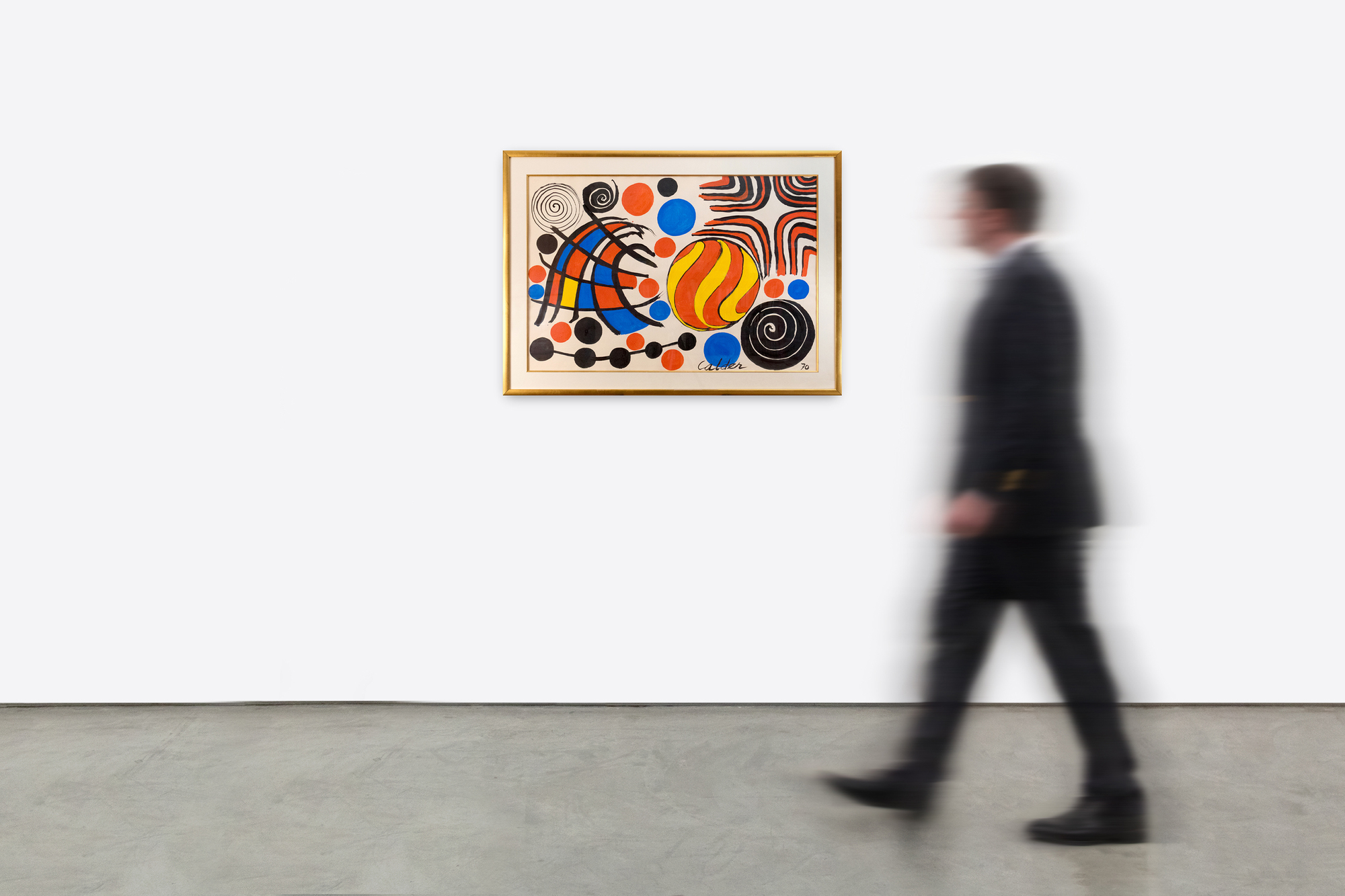
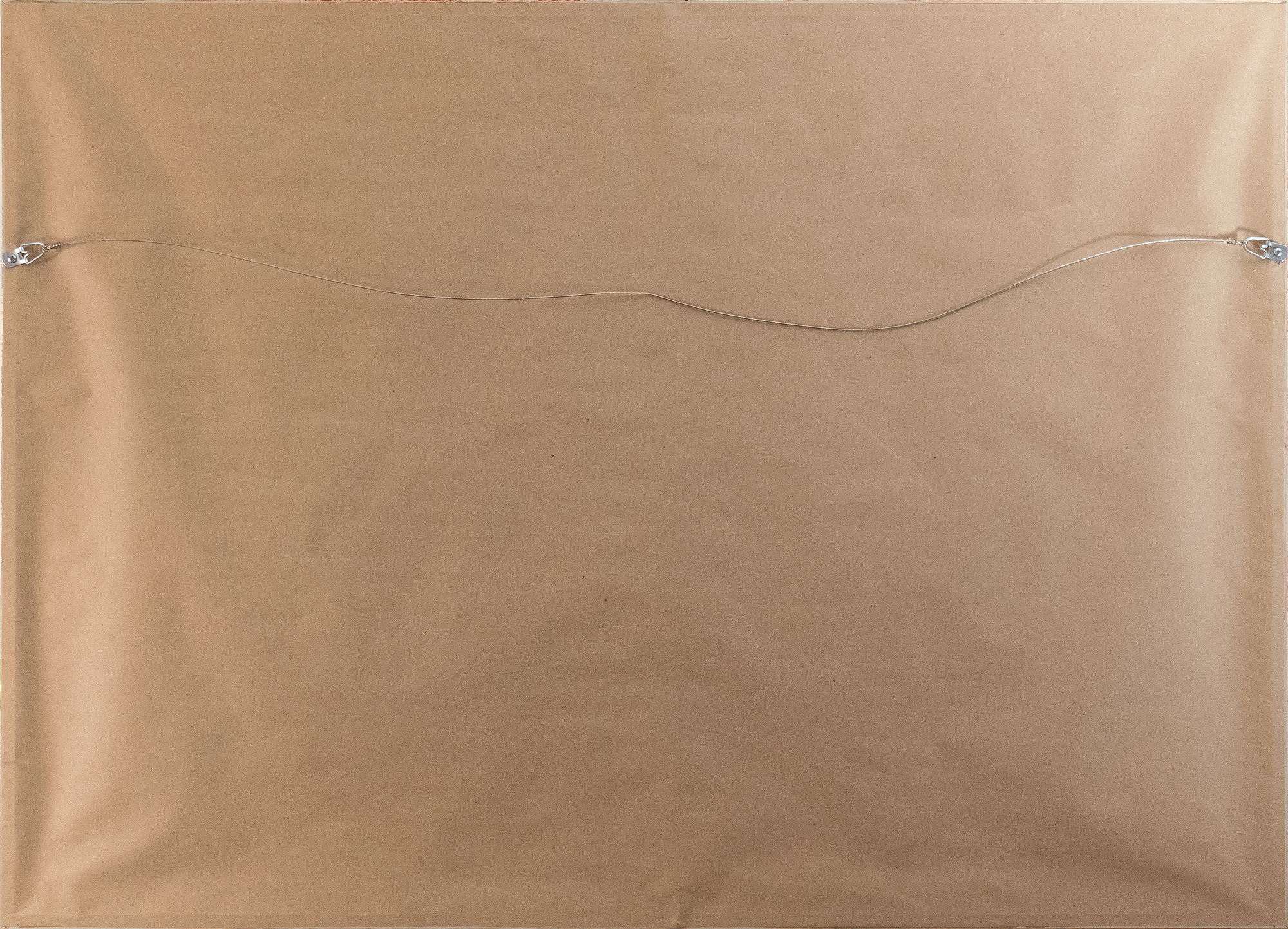
Procedencia
Colección privadaPrecio250,000
En este gouache de 1970, Calder emplea una gama de motivos visuales densamente poblada y diversa. Grandes círculos rojos, azules y negros flotan entre espirales y otras formas abstractas, mientras que un orbe central amarillo, salpicado de rojo, parece irradiar energía, sugiriendo movimiento o calor. A la izquierda, una estructura de líneas y formas que se entrecruzan introduce una onda arquitectónicamente sobria, mientras que dinámicas espirales animan la composición. El resultado es una exhibición festiva de los elementos característicos de Calder -colores primarios vivos, formas geométricas y líneas fluidas-, cada uno de los cuales interactúa con un ritmo vivo y armonioso.


